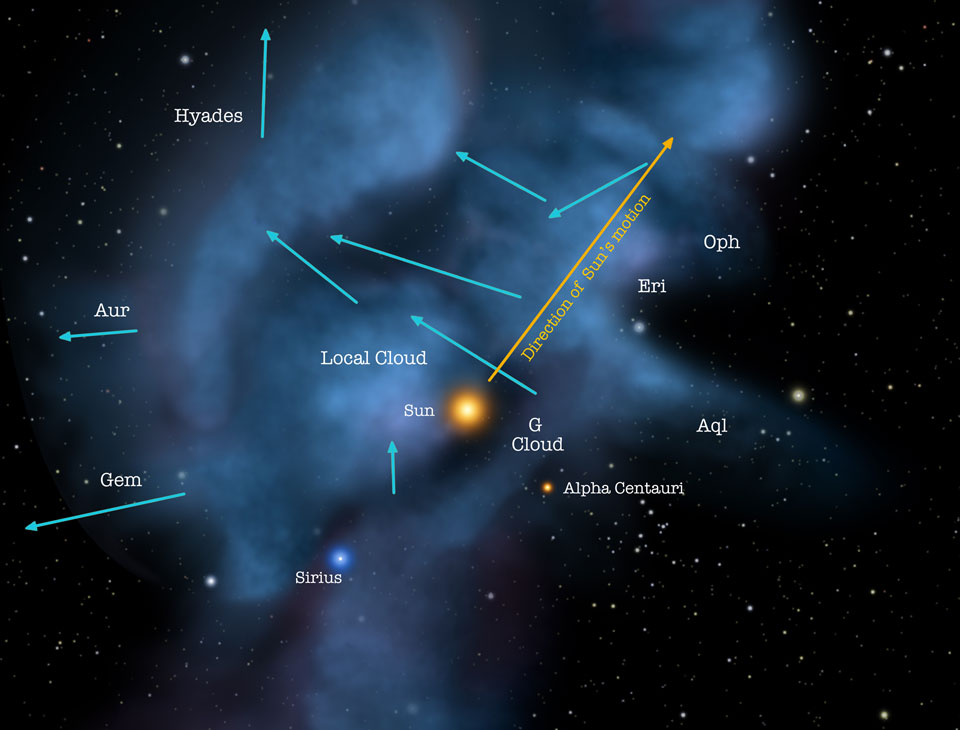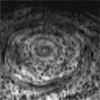Didn't that happen like 3 months ago?
Well it happened a year ago but now NASA is for sure.
Didn't that happen like 3 months ago?
Well it happened a year ago but now NASA is for sure.
I guess when it's that far out it's hard to be certain when it's actually "out" especially since I would guess the "end" of our solar system is some arbitrary line.
the weirdest thing is that statistically not one pair of stars will collide. They'll all miss each other by light years. Gravity will start merging and repositioning everything with crazy new orbits, but galaxies are almost entirely empty.
What's as amazing to me is that, given how big the universe is, galaxies still manage to collide with each other.

Oh yeah. I've seen that before. The Millenium Simulation it's called? Looks like neurons in a brain.That actually makes sense tho - if you look at the "web" structure of the universe - which is estimated to look like this:
[
You see that while there's loads of "empty space" - the strands of normal matter (superclusters of galaxies) are quite dense in their distribution.
I mean the distances and timescales are stupefying, but it makes more sense than an evenly distributed set of Galaxies (that are largely all moving away from each other as space itself expands).
I would like to see artistic depictions of possible night skies in various parts of the galaxy.
When seeing pics of colliding galaxies, I can't help but wonder how it would like from a planet near a star that got ejected into empty space.
The first picture from space. It was taken in 1946 by a V2 rocket that the US had captured from Nazi Germany.

Must have been a mind blowing moment to see this for the first time.
Did a hyper-black hole spawn the Universe?
Big Bang was mirage from collapsing higher-dimensional star, theorists propose.

The event horizon of a black hole the point of no return for anything that falls in is a spherical surface. In a higher-dimensional universe, a black hole could have a three-dimensional event horizon, which could spawn a whole new universe as it forms. ARTIST'S IMPRESSION BY VICTOR DE SCHWANBERG/SCIENCE PHOTO LIBRARY
It could be time to bid the Big Bang bye-bye. Cosmologists have speculated that the Universe formed from the debris ejected when a four-dimensional star collapsed into a black hole a scenario that would help to explain why the cosmos seems to be so uniform in all directions.
The standard Big Bang model tells us that the Universe exploded out of an infinitely dense point, or singularity. But nobody knows what would have triggered this outburst: the known laws of physics cannot tell us what happened at that moment.
For all physicists know, dragons could have come flying out of the singularity, says Niayesh Afshordi, an astrophysicist at the Perimeter Institute for Theoretical Physics in Waterloo, Canada.
It is also difficult to explain how a violent Big Bang would have left behind a Universe that has an almost completely uniform temperature, because there does not seem to have been enough time since the birth of the cosmos for it to have reached temperature equilibrium.
To most cosmologists, the most plausible explanation for that uniformity is that, soon after the beginning of time, some unknown form of energy made the young Universe inflate at a rate that was faster than the speed of light. That way, a small patch with roughly uniform temperature would have stretched into the vast cosmos we see today. But Afshordi notes that the Big Bang was so chaotic, its not clear there would have been even a small homogenous patch for inflation to start working on.
On the brane
In a paper posted last week on the arXiv preprint server1, Afshordi and his colleagues turn their attention to a proposal2 made in 2000 by a team including Gia Dvali, a physicist now at the Ludwig Maximilians University in Munich, Germany. In that model, our three-dimensional (3D) Universe is a membrane, or brane, that floats through a bulk universe that has four spatial dimensions.
Ashfordi's team realized that if the bulk universe contained its own four-dimensional (4D) stars, some of them could collapse, forming 4D black holes in the same way that massive stars in our Universe do: they explode as supernovae, violently ejecting their outer layers, while their inner layers collapse into a black hole.
In our Universe, a black hole is bounded by a spherical surface called an event horizon. Whereas in ordinary three-dimensional space it takes a two-dimensional object (a surface) to create a boundary inside a black hole, in the bulk universe the event horizon of a 4D black hole would be a 3D object a shape called a hypersphere. When Afshordis team modelled the death of a 4D star, they found that the ejected material would form a 3D brane surrounding that 3D event horizon, and slowly expand.
The authors postulate that the 3D Universe we live in might be just such a brane and that we detect the branes growth as cosmic expansion. Astronomers measured that expansion and extrapolated back that the Universe must have begun with a Big Bang but that is just a mirage, says Afshordi.
...

Looked like a good burn! Cassiope separation coming up soon.Spacex is doing a launch event of the Cassiope satellite:
http://www.spacex.com/webcast/
10 minutes!

They set up a cylindrical, rotatable tank 10 centimeters deep and 60 centimeters wide. The tank had a lid and base that were split into concentric sections. They could rotate the inner circle of the lid and floor of the tank at a different rate than they rotated the outer circle of the tank and floor, setting up a gradient in the flow speed of the liquid at the joint between the inner and outer circles. Depending on the relative speeds of the two disks, different things happened. At low relative speeds, there was nothing particularly unusual in the flow, just rotation of the water in the tank. But as the gradient between the two rotating sections was increased, wavelike instabilities started forming at the boundary between the two disks. Depending on conditions, the waves evolved chaotically or sometimes quite stably; there might be as few as two or as many as eight waves encircling the axis of rotation. But for a reasonably wide range of experimental parameters, they produced a wavenumber of 6: a hexagon.
A new study, published today in the Proceedings of the National Academy of Sciences, suggests that Earth-like planets capable of supporting life are far more common than previously thought.
Organic, can that claim actually be made?
morehttp://i.imgur.com/ljkrCPG.jpg[IMG][/QUOTE]
Is there an image of the reverse-side? It looks like a volvelle.
[QUOTE][IMG]http://abload.de/img/apollo-15-mission-anayosm6.png
weight at 1 bar?lol define "on Jupiter"
Is there an image of the reverse-side? It looks like a volvelle.
Astronomers estimate that the Milky Way contains up to 400 billion stars of various sizes and brightness.
And so, if you multiply the number of stars in our galaxy by the number of galaxies in the Universe, you get approximately 10[to the 24th power] stars. Thats a 1 followed by twenty-four zeros.
Thats a septillion stars.
But there could be more than that.






Don't worry about the"bump" junior!! This thread should stay at the top of OT. It should be stickied as far as I'm concerned.Sorry for the bump, but this one's worth it.
ISON.... LIVES!!

http://www.nasa.gov/content/goddard/comet-ison-may-have-survived/#.Upj9UuJf1hF

